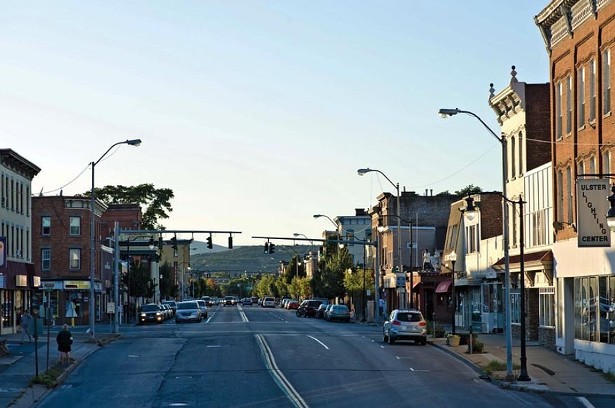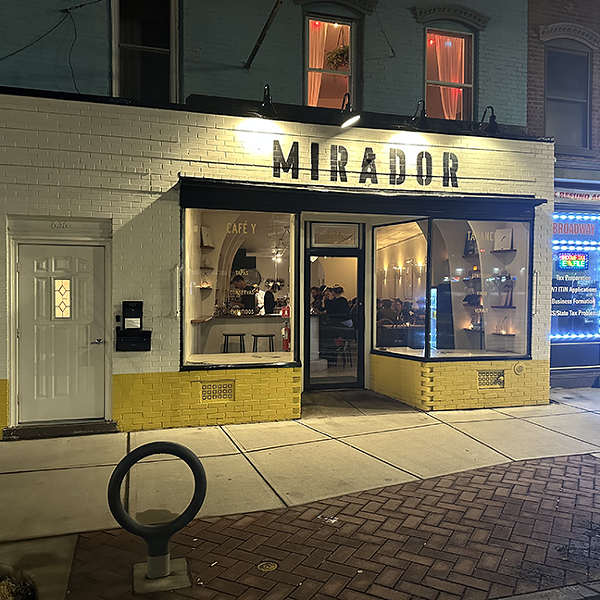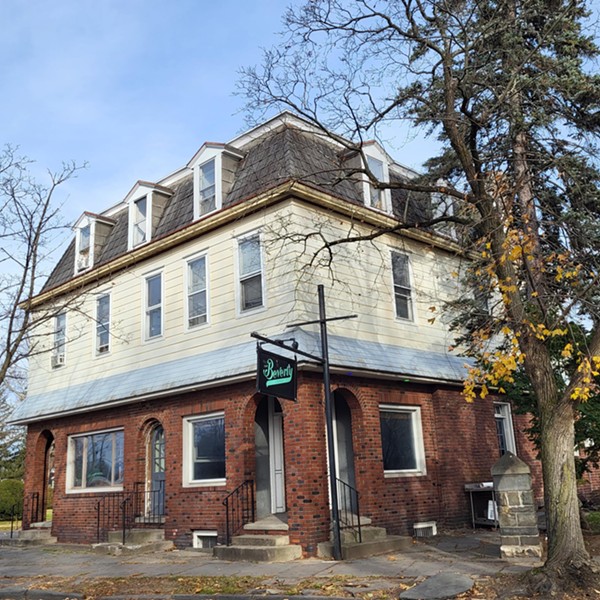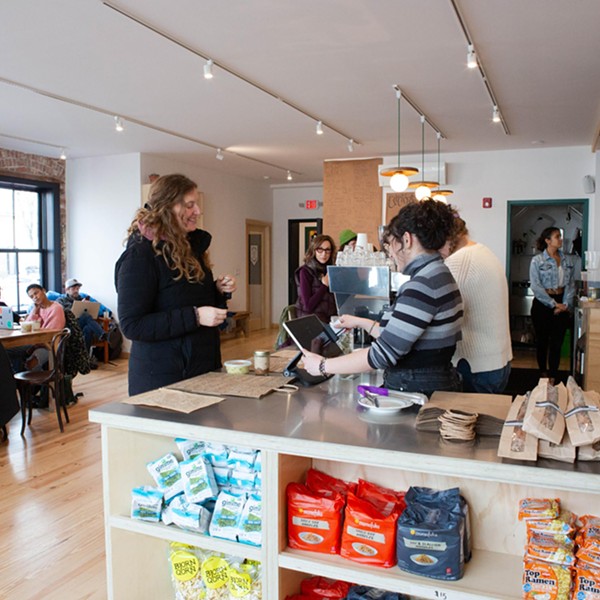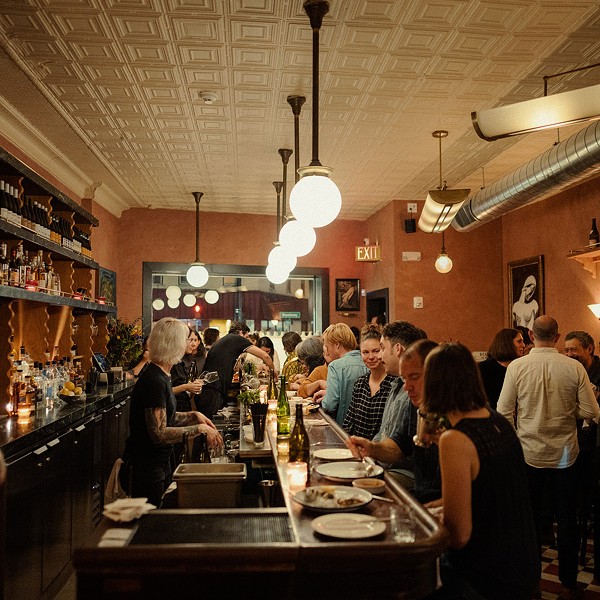I had a visitor to my office recently from out of town. As I rarely receive guests anymore, it was quite a treat, especially given that I got to show off our new digs in the Fuller Building, a renovated shirt factory here in Midtown Kingston that's smart in that industrial chic way. As we sat in the luxurious confines of the Place Where the Magic Happens (aka my office), my visitor asked after the state of Kingston. (Rest assured we were masked, gloved, gowned, and double-bagged.)
While she didn't live terribly far away—Woodstock, in fact—she had not been to Kingston for many months and was curious to see what all the fuss was about.
The fuss, as you well know, is that Kingston—like much of the Hudson Valley—has a white-hot real estate market. Home prices that had been gradually increasing since 2010 went through the roof in 2020, driven by pandemic expats fleeing "hot, smelly, tight New York City," as Gregory Corso wrote of his beloved city. People bought homes sight unseen. Affluent New Yorkers showed that they were willing to pay a premium—sometimes 30 percent over asking price with an all-cash offer—to escape a city under lockdown. By the end of 2020 Ulster County had seen a 44-percent increase in the average home sales price, from $270,842 to $390,581.
The fuss, as my colleague Phillip Pantuso has reported at The River Newsroom in a recent interview with Deputy Ulster County Executive Evelyn Wright, is that median rent has already increased 16 percent or more prior to 2020. (Undoubtedly, it's gone up even more in the interim.) The rise in rental and home prices is exacerbated by household incomes stagnating or declining for all but the county's highest earners. As Phillip reports: "Approximately 13 percent of homeowners and a staggering 30 percent of renters are severely cost burdened, meaning they spend more than half of their income on housing." In describing the bind we're in, Wright says: "We are fighting upstream against 21st-century American capitalism. This is happening to us because we are a low-wage place facing an influx of high-wage earners."2 (The county just released a 144-page report on the current housing crisis and some recommendations to boot. Read the report, along with the interview.)
The fuss is over The Kingstonian, a proposed large-scale development of market rate housing in Uptown Kingston (with a small component of affordable units, added to the project after a firestorm of criticism), which was about to be denied tax breaks by the county Industrial Development Agency—before the agency changed its rules at the last minute and the tax breaks went through anyway.
Kingstonians are also fussin' about Hutton Brickyards, which is about to open the luxury cabins on its property for overnight rentals ($325 to $345 a night)—as well as an on-site restaurant, and eventually, more lodging at the Cordts Mansion, a historic home on a hill overlooking the brickyard that the hospitality group just bought for $2.35 million. The fact that the near-completion of the Hutton Brickyard cabins coincided neatly with the installation of a locked gate at the entrance to the city parking lot at Kingston Point Beach caused some conspiratorially minded folks to scratch their heads. Here's why: The entrance to the Empire State Trail—which travels through the Brickyard property by prior arrangement with all involved parties—is at one end of the city parking lot. And the gate was sometimes locked in mid-morning, even though the city said it would only be locked at night, as it does in other city parks. It made some folks wonder if the city was actively keeping visitors out of the city parking lot in order to stop them from traipsing through the brickyard on the Empire State Trail—also by some prior, if sub rosa, arrangement.
The fuss is over Barnfox4, a new coworking space in Kingston that was caught in the crosshairs of the anti-gentrification movement in the city and became the symbol of exploitative capitalism at its worst. You can find the Boycott Barnfox group on Instagram (@boycott_barnfox). In early March, I attended a Zoom meeting they held with the owners of Barnfox to go over their demands. It was part consciousness-raising event, part show trial, part farce. Early on, one pro-Barnfox partisan kept interrupting the meeting to ask the Boycott Barnfox organizers why the owners of Barnfox needed to answer to the demands of an ad hoc group of activists who seemed to be substituting one business for all the problems of gentrification. (This interrupting person was quite disruptive and rude—one might call him an asshole—and the organizers eventually kicked him out of the meeting.) But I tend to agree with the interrupting person's point—why single out Barnfox rather than any other business, cultural organization or municipal beautification effort?—but that doesn't make the low-wage/high-cost-of-living predicament facing young people in Kingston any less dire. As the folks at KingstonWire put it so well in a recent editorial: "Any way our housing crisis is sliced, it makes the hard lives of those most ill-equipped to deal with changes a hell of a lot harder. Or to put it another way, you don't have to get infected to have your life upended by a virus."
Back at my office, my visitor told me she had heard about all this roiling ferment and change in Kingston, but driving across town she didn't see much change since the last time she was here. It looked the same as it ever did. And it's true, it's hard to see the changes that are taking place. But they're large-scale and they're definitely happening. It may take awhile to see the effects of what's happening. Maybe one day we'll wake up and everyone who used to live in Kingston will have finally moved away. It's like that great Hemingway line from The Sun Also Rises that works so well in so many situations. One guy asks another how he went bankrupt. "Slowly, and then all at once," the second replies.







